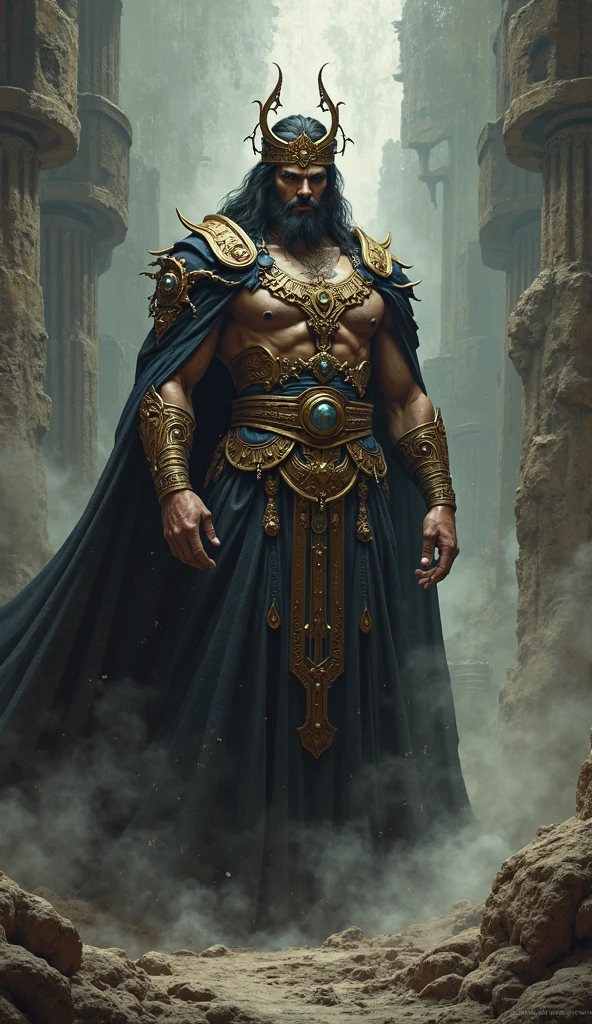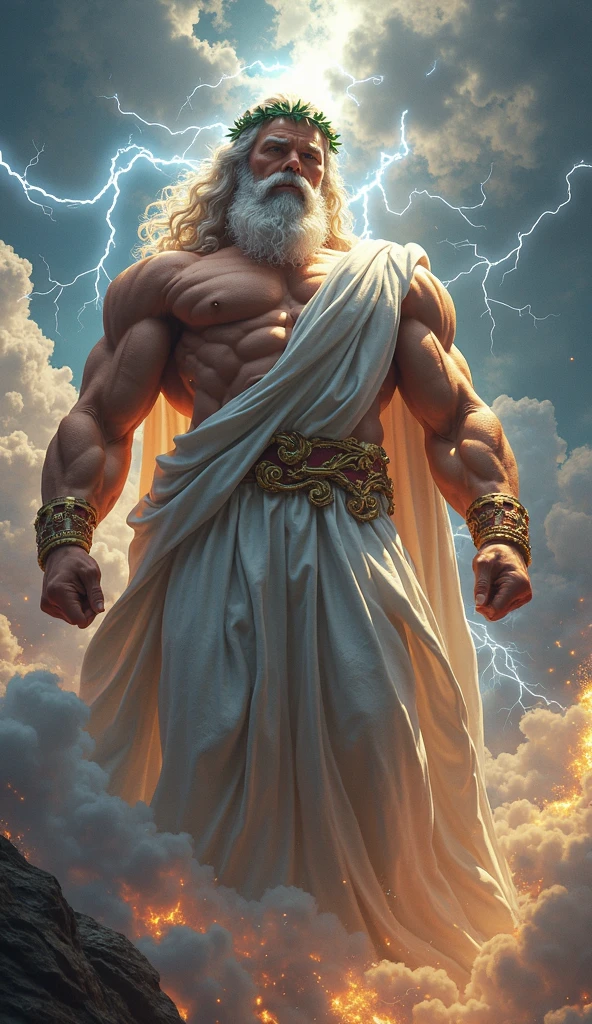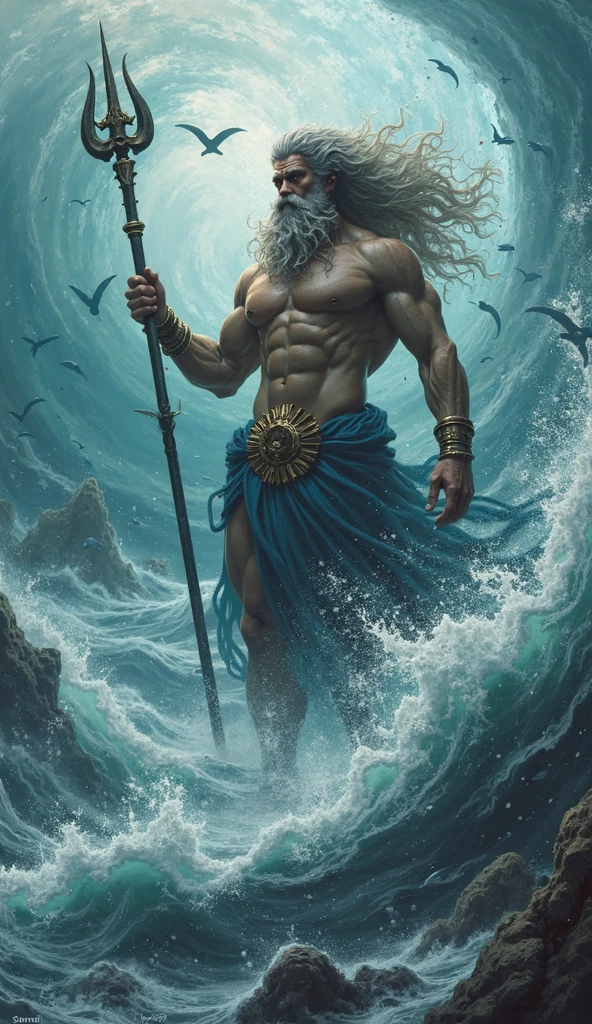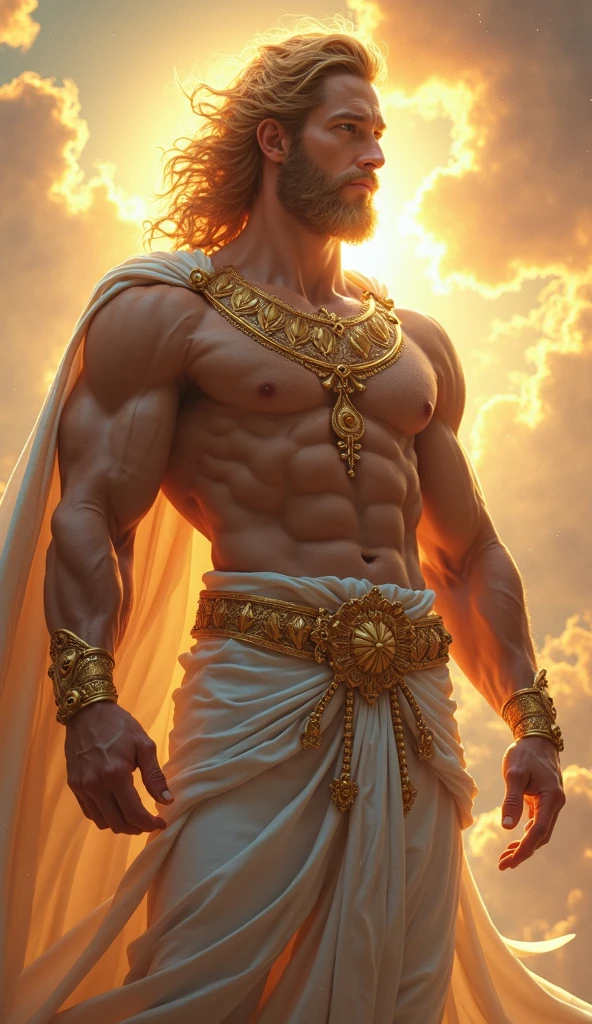Hel – Norse Goddess of the Underworld
Lineage and Origin: Daughter of Loki and Angrboda
In Norse cosmology, Hel—also spelled Hela—is born from a union already foreshadowing an exceptional destiny. Her father is Loki, the trickster-god of guile and shapeshifting, and her mother Angrboda, a giantess of Jotunheim, land of the jötnar. This mixed ancestry makes her half-goddess and half-giant, explaining her ambiguous position within the Norse pantheon. From the same parents sprang Fenrir, the wolf destined to slay Odin, and Jörmungandr, the world-serpent that will kill Thor.
The etymology of Hel derives from Old Norse helja, “the one who conceals or protects.” This linguistic root mirrors the goddess’s liminal nature: she guards the hidden, namely the souls no longer belonging to the world of the living or to the glorious dead of Valhalla.
Odin’s Judgment: Exile to the Underworld
When Odin, through his omniscience, foresaw that Loki’s three offspring would play key roles in Ragnarök, he took drastic measures to minimize the threat:
-
Fenrir was bound with the dwarven-forged ribbon Gleipnir.
-
Jörmungandr was hurled into the encircling ocean around Midgard.
-
Hel was cast into Niflheim and granted sovereign authority over all souls who die of illness or old age.
This act was not only punishment but also delegation of power: Odin needed a ruler capable of administering the inevitable fate of most mortals. From that moment, Niflheim became known as Helheim, “Hel’s realm.”
Dual Appearance: Beauty and Decay
Norse texts depict Hel with a disturbing yet symbolic form:
-
Living half: her right side shows the face of a pale but still beautiful young woman.
-
Dead half: the left side reveals blue-black decayed flesh, decomposed down to the bone, with exposed ribs and rotting tissue.
This chromatic and physiological duality represents the porous boundary between life and death and underscores Hel’s moral neutrality: she is neither good nor evil, but the embodiment of inevitable destiny.
Helheim: Geography and Morphology of the Realm of Shadows
Helheim is described as a vast, frozen territory shrouded in perpetual fog and ruled by absolute silence. Key features include:
-
Location: beneath the deepest roots of Yggdrasil, far from sunlight.
-
Access: after crossing the river Gjöll, souls must pass through the gate Helgrind, guarded by the giantess Modgud.
-
Architecture: Hel’s hall Eljudnir (“Damp and Desolate”) has towering walls and leaden roofs; its rooms include the banquet hall Éljúðnir and the bedchamber Ganglati-Ganglöt, tended by the sluggish maids Ganglati (“Tardy”) and Ganglöt (“Lethargic”).
Souls arriving here undergo no active torment, yet they also know no glory: they wander without substance, dimly recalling past lives in a gray, stimulus-starved existence.
Functions and Powers of Hel
As the governess of post-mortem destiny for the majority of humankind, Hel wields singular powers even among the gods:
-
Absolute control over death: she can deny resurrection to any being, including the Aesir.
-
Authority over illness and old age: her mere presence can accelerate physical decay.
-
Mastery of cold and darkness: some sources credit her with cryokinesis and the ability to merge with snowstorms.
-
Immortality and extreme regeneration: her body can reassemble even after molecular dispersal.
During Ragnarök, Hel is fated to release her legions of the dead to join her father Loki’s army against the gods.
Foundational Myth: The Death of Balder and Hel’s Refusal
One episode that best illustrates Hel’s inescapable authority is the death of Balder, god of light:
-
Murder: Balder is slain by a mistletoe dart guided by the blind Höðr, instigated by Loki.
-
Negotiation: The gods send messenger Hermod to Helheim to plead for Balder’s return.
-
Condition: Hel agrees only if every creature in the cosmos weeps for him.
-
Failure: The giantess Þökk—widely believed to be Loki in disguise—refuses to weep, and Balder remains in Helheim.
This tale underlines that not even Odin can overturn Hel’s verdict, reinforcing her role as guardian of cosmic order.
Hel vs. Freyja: Two Death Goddesses?
Some scholars propose that Hel might be a dark aspect of Freyja, the goddess of love and war. Both:
-
Receive the dead: Freyja takes half of battle-slain warriors to her field Fólkvangr; Hel welcomes those who die outside of combat.
-
Share etymology: both names derive from Germanic roots related to “conceal” or “protect.”
Most sources, however, regard them as separate entities: Freyja embodies glorious death; Hel, everyday and non-heroic death.
Popular Perception and Christian Demonization
With the arrival of Christianity in Scandinavia, Hel’s image underwent progressive demonization:
-
Christianized Snorri: Snorri Sturluson, writing the Prose Edda in the 13th century, adapted myths for a Christian audience, casting Hel as more malevolent.
-
Norse hell: Helheim became described as a frozen hell, analogous to the Christian inferno, although originally it was a neutral place.
-
Modern iconography: films like Thor: Ragnarök (2017) portray Hela as a powerful villain and sister of Thor, an adaptation far removed from classical myth.
Cult, Offerings, and Funerary Rituals
Although no organized cult to Hel is attested in pre-Christian Scandinavia, archaeologists have found:
-
Amulets shaped like half-faces: possible representations of her split visage, used as funerary talismans.
-
Food offerings: Viking graves sometimes contain plates of food, perhaps to placate Hel and secure favorable treatment for the soul.
-
Runic invocations: fragmented inscriptions request “safe passage through Hel.”
Hel in Medieval Norse Literature
Eddas and Sagas
-
Poetic Edda: mentions Hel in the poem Völuspá when Odin journeys to the Underworld.
-
Prose Edda (Snorri): provides the most detailed account of the realm and Hel’s appearance.
-
Saga of the Volsungs: recounts heroes traveling to Hel’s realm to consult the dead.
Modern Interpretations
-
J. R. R. Tolkien drew inspiration from Helheim for the Grey Havens in The Silmarillion.
-
Neil Gaiman features Hel in American Gods, emphasizing her moral neutrality.
-
Video games like God of War (2018) and Assassin’s Creed Valhalla include references to Hel’s realm.
Comparison with Other Underworld Goddesses
| Feature | Hel (Norse) | Hecate (Greek) | Morrigan (Celtic) | Ereshkigal (Mesopotamian) |
|---|---|---|---|---|
| Domain | Natural death | Magic & crossroads | War & death | Realm of the dead |
| Appearance | Half-corpse | Triple face | Crow or woman | Dark queen |
| Attitude toward gods | Autonomous | Collaborative | Oppositional | Absolute sovereign |
| Role in cosmology | Balance | Transition | Fate | Primordial order |
Influence in Contemporary Popular Culture
Film and Television
-
Marvel Cinematic Universe: Thor: Ragnarök introduces Hela as Thor’s exiled sister, portrayed by Cate Blanchett. While visually striking, her story departs markedly from the original myth.
-
Vikings (TV series): Helheim is mentioned in several episodes as the fate of non-warriors.
Literature and Comics
-
Manga: Vinland Saga references Vikings’ fear of “going to Hel.”
-
Graphic novel: The Wicked + The Divine personifies Hel as a gothic rock star.
Video Games
-
God of War (2018): the protagonist visits Helheim, depicted as a frozen realm with bone bridges.
-
Smite: Hel is a playable goddess with dark-damage and healing abilities.
Symbols and Religious Attributes
| Symbol | Meaning |
|---|---|
| Split face | Life-death duality, permeable boundary |
| Raven | Messenger between worlds, soul guide |
| Empty plate | Offering to appease her hunger for death |
| Fog | Veil between seen and unseen |
| Blue-black hue | Cold, decay, absence of vital warmth |
Journey to the Underworld: Map of Helheim
For the curious who wish to imagine a voyage to Hel’s realm:
-
Departure from Midgard: the soul is guided by valkyries or soul-maidens to the river Gjöll.
-
Bridge Gjallarbrú: guarded by Modgud, who questions newcomers.
-
Gate Helgrind: massive iron gate forged by dwarves.
-
Road Helvegr: path of bone and ice crossing foggy plains.
-
Palace Eljudnir: Hel’s throne room, where final sentences are pronounced.
External References for the Advanced Student
-
World History Encyclopedia – Hel (scholarly overview)
-
Viking Heritage – Hel, Goddess of Death (cultural focus)
-
Mythology Portal – Hela (literary analysis)
Professor’s note: Images have been AI-generated to illustrate mythological concepts; interpret them didactically, not literally.



